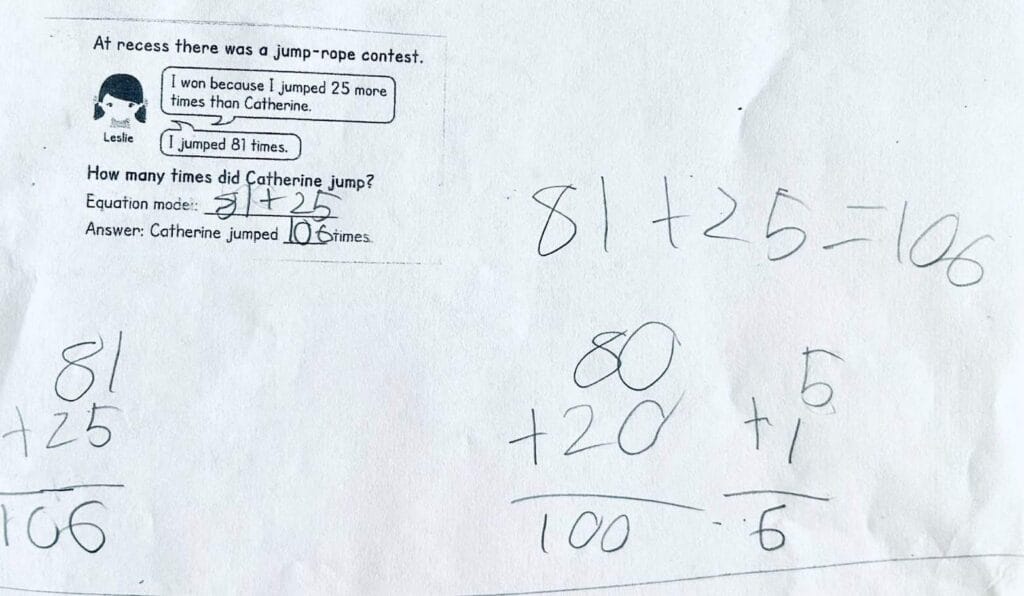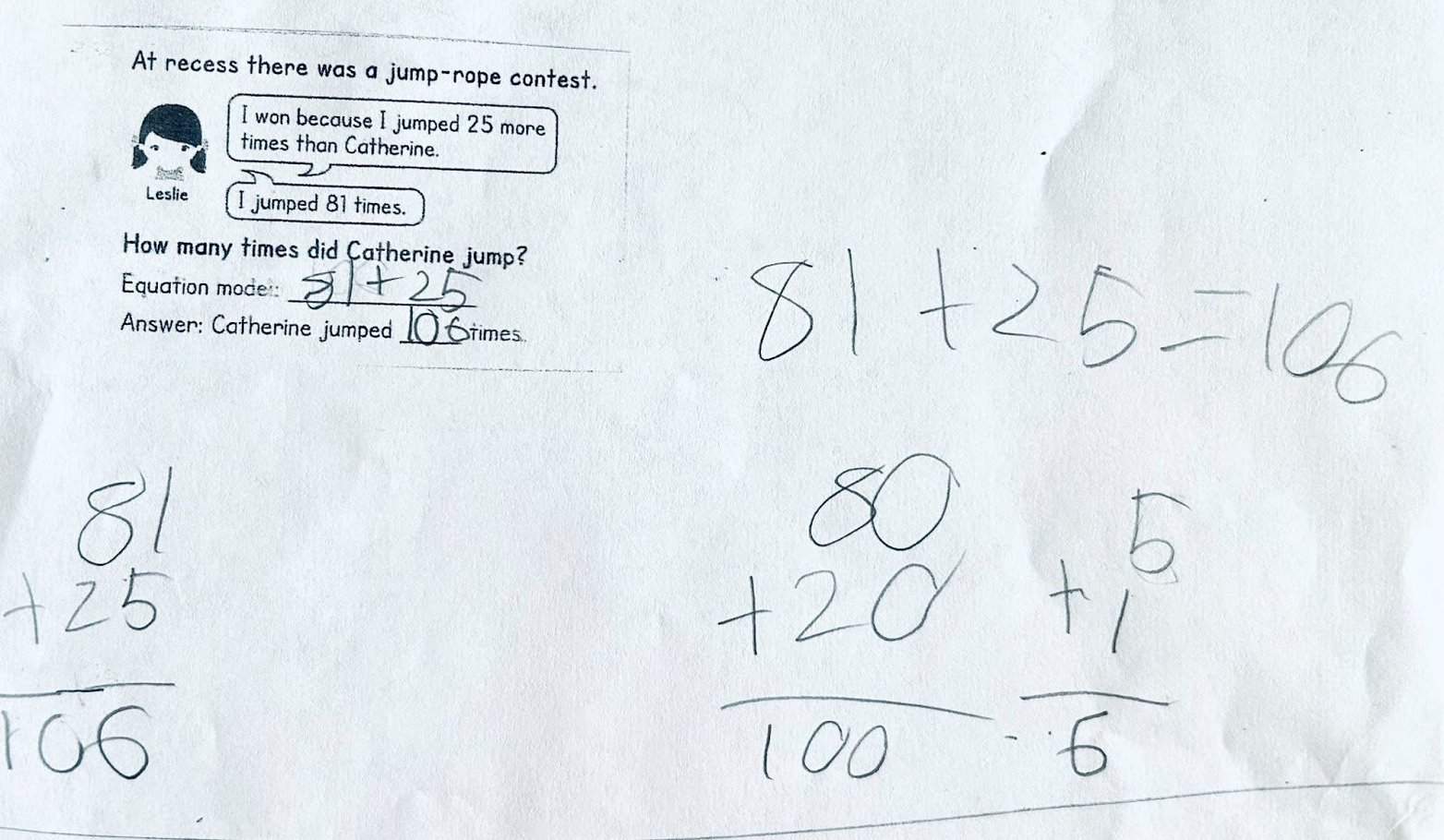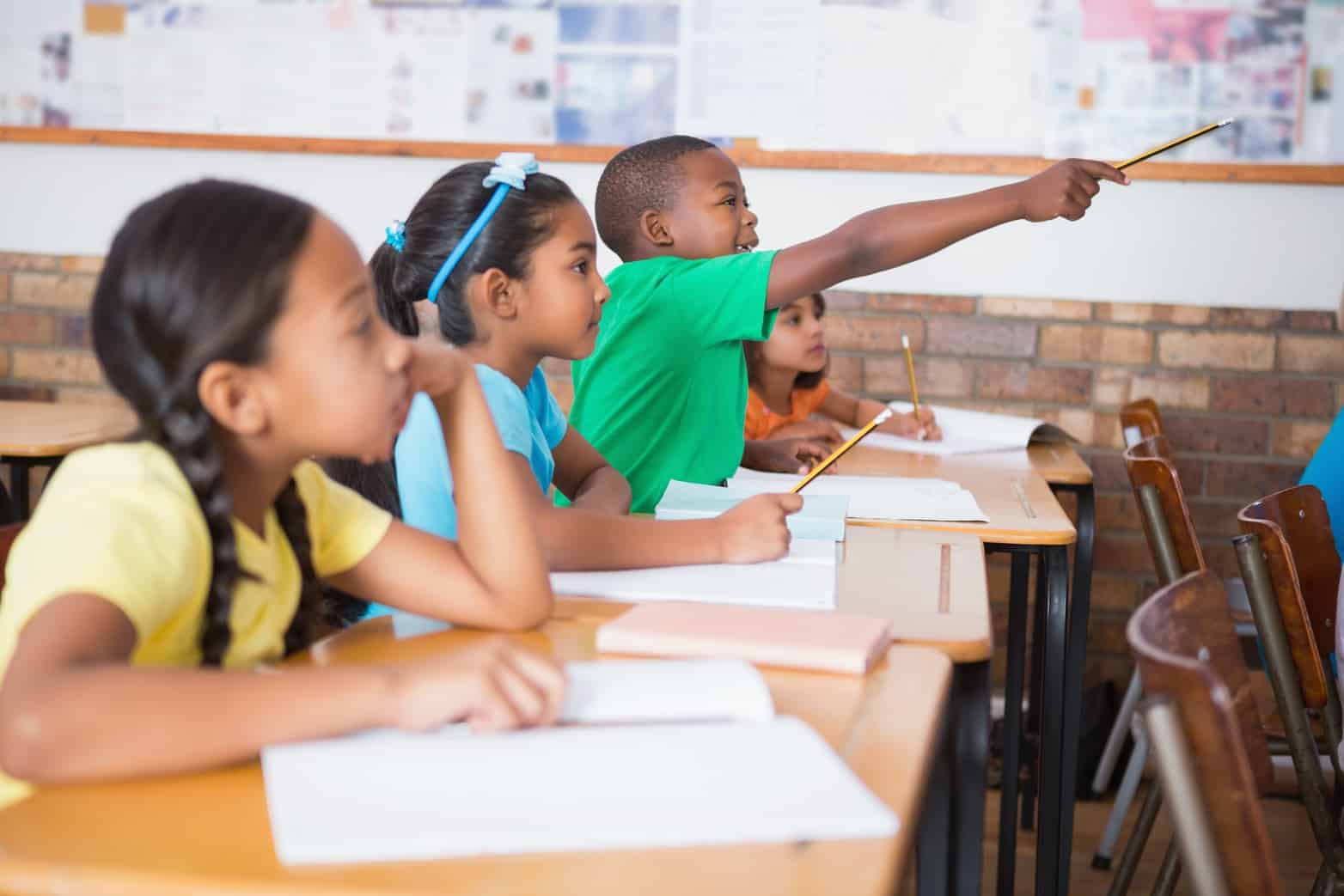Since I began teaching six years ago, I’ve had numerous experiences dissecting standards and broadening my knowledge base of not only how the standards progress within and across grade levels but also how students relate to the standards and strands of mathematical proficiency. My years as a classroom teacher, as a site-based teacher leader for K-2 math at my school, and as a member of the Caddo Parish math content team have allowed me to assist in creating, reviewing, and analyzing standards-based math assessments for my district. In addition, I also have experience developing digital math resources for the Louisiana Department of Education’s Accelerate Math program that addresses unfinished learning with a just-in-time tutoring model. Naturally, when I was given the opportunity to contribute to the Math Milestones™ initiative last fall, I was looking forward to sharing my expertise in second-grade math and sharing how I’ve seen second graders tackle math problems. This is an obstacle every teacher faces: What are my students thinking as they are deciding how to solve math problems? What details are students noticing that help them solve problems accurately or inaccurately? Although it’s unfortunate I cannot see inside the minds of my students, I can anticipate student errors and learn how they think by evaluating their work.
The approach to student work familiar to me, through my own teaching and professional development training, was to determine what the students CANNOT do so that I can make intentional instructional decisions during core math instruction or interventions and correct any academic deficits. However, early on in my work on the Math Milestones™ initiative, I quickly realized that I was missing the boat as far as how I was analyzing student work when one of the Student Achievement Partners team members asked me: “What are the student’s assets?” I pondered that question for a few seconds. I then realized I had to totally change my mindset on how I was analyzing student work and ask myself: “What CAN this student do?” I have always prided myself on being a very positive person and motivating my students to succeed, so why had I never considered looking at student work from this perspective? Once I began shifting my focus and analyzing student work in a more positive light, it really opened my eyes as to how I would assess my students and pinpoint where I needed to begin my work with them by building on what they already knew. This knowledge would allow me to accelerate them faster to grade-level work instead of spending valuable class time remediating them on standards they had already mastered.
For instance, let’s look at task 2:12 Jump-Rope Contest on the Math Milestones™ grade 2 grid.

Although this particular student incorrectly solved the word problem, I determined this student has the following assets:
- Knows that a two-digit number has tens and ones
- Can apply place value strategies to add
- Knows how to add within 10
- Knows how to add two, two-digit numbers within 100
- Understands the base-ten system that 10 tens is equal to 100
- Possesses number sense; can relate 8 + 2 = 10, so 80 + 20 = 100.
- Can add multiples of 10
This student does possess conceptual understanding and procedural skill and fluency of how to add two-digit numbers within 100, but they still need work on adaptive reasoning skills to determine if their problem-solving solution makes sense. I can deduce this student saw the word “more” and immediately determined they needed to add the two values together. The dreaded “key word” era has this student number grabbing and adding any numbers they see together. I wonder what would have happened if this word problem had been presented to them as numberless, meaning removing the values so the student could really read and understand what the story is telling them, and including Leslie’s name in place of the pronoun “I.”
For example:
At recess there was a jump-rope contest. Leslie won because she jumped ______ more times than Catherine. Leslie jumped _____ times.
Presented in this way, students might be able to see that without the values inserted, “Leslie won because she jumped more times than Catherine.” Might this student have drawn out their thinking by using a tape diagram and labeling Leslie’s tape as longer than Catherine’s so they can visually see what the story is trying to explain? Knowing Leslie jumped more times (at 81 times) means Catherine must have jumped less. Might the student have then seen that they needed to subtract these values, so Catherine had to have jumped 56 times? Expecting students to reread the word problem and ask themselves if the answer sounds like a reasonable answer promotes sense making and supports the standard of mathematical practice SMP.1 (Make sense of problems and persevere in solving them). Students too often assume that once they produce an answer, they are done and can move on to the next problem. Mathematically proficient students who check their work for reasonableness are most likely to self-correct mistakes and develop perseverance.

Overall, working on the Math Milestones™ initiative has been an extremely rewarding experience because I was able to focus on students’ strengths instead of their weaknesses. This allowed me to become a much stronger teacher and bridge any misconceptions much faster by giving them targeted instruction starting from the understanding and assets they demonstrated. By utilizing Math Milestones™ tasks within my classroom, my students could see the connections between concepts and how they built upon each other while incorporating visual representations, critical thinking, and problem-solving skills. These tasks developed a deeper understanding of the mathematical concepts within my students, which is crucial for students’ future academic and personal success.





